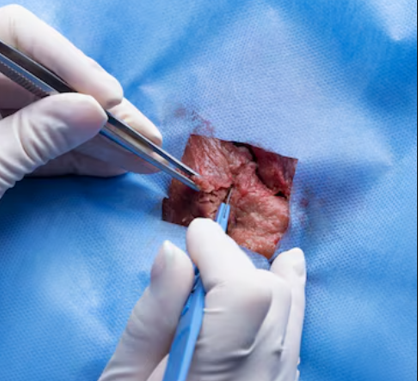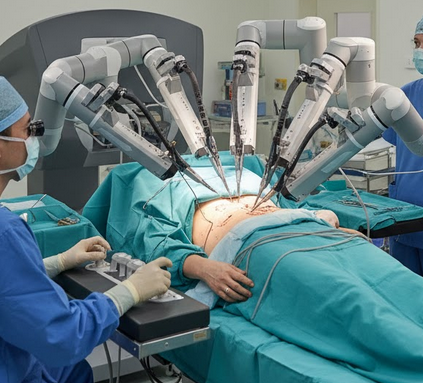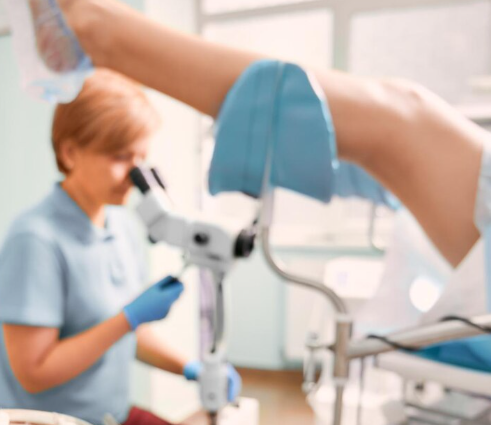Treatment Overview
The Ultrasound-Guided Laparoscopic Ovarian Cyst Surgery Program in Korea represents the next generation of precision-based gynecologic surgery. By integrating real-time intraoperative ultrasound imaging with advanced laparoscopic techniques, this method enables surgeons to remove ovarian cysts with superior accuracy while preserving ovarian tissue and reproductive function.
Ovarian cysts—fluid-filled or solid masses on the ovaries—can cause discomfort, hormonal imbalance, or infertility when persistent or complex. While traditional laparoscopic surgery provides visual guidance, ultrasound-assisted laparoscopy adds an internal imaging layer, allowing surgeons to identify cyst boundaries, vascular structures, and hidden lesions with unparalleled precision.
Korea’s top-tier hospitals—Samsung Medical Center, Asan Medical Center, Severance Hospital (Yonsei University), CHA Bundang Women’s Hospital, and Ewha Womans University Medical Center—are global pioneers in ultrasound-integrated laparoscopic gynecology, using cutting-edge imaging systems and fertility-preserving microsurgical techniques to deliver optimal outcomes.
Purpose & Benefits
The goal of ultrasound-guided laparoscopic ovarian cyst surgery is to achieve complete cyst excision while maintaining healthy ovarian tissue and ensuring reproductive potential. This approach is especially valuable for complex, multi-loculated, or endometriotic cysts that may be difficult to define visually.
Key benefits include:
- Real-Time Ultrasound Visualization: Enhances precision by identifying cyst borders and nearby structures.
- Tissue Preservation: Minimizes removal of healthy ovarian tissue, protecting fertility.
- Reduced Risk of Complications: Avoids damage to blood vessels and surrounding organs.
- Minimally Invasive: Small incisions mean faster healing and less scarring.
- Improved Accuracy: Allows for better differentiation between cyst types.
- Quicker Recovery: Most patients recover within 1–2 weeks.
- Lower Recurrence Rates: Complete cyst removal decreases recurrence chances.
This advanced image-guided method reflects Korea’s commitment to combining technology and surgical artistry for optimal women’s health outcomes.
Ideal Candidates
Ultrasound-Guided Laparoscopic Ovarian Cyst Surgery is ideal for women with complex or persistent cysts who wish to minimize surgical risks and preserve reproductive health. Candidates include:
- Women with large, recurrent, or multiloculated cysts.
- Patients with endometriotic or dermoid cysts requiring high-precision excision.
- Women with pelvic pain, bloating, or menstrual irregularities caused by cysts.
- Patients planning for future pregnancy or fertility preservation.
- Individuals with diagnostically unclear cysts, where real-time ultrasound enhances safety.
Before surgery, Korean specialists perform a comprehensive diagnostic evaluation—including transvaginal ultrasound, MRI, and hormone testing—to determine the best surgical strategy for each patient.
Possible Risks & Complications
Ultrasound-guided laparoscopic ovarian cyst surgery in Korea is considered very safe, but as with all minimally invasive procedures, minor risks exist:
- Mild bleeding or infection (rare with advanced sterilization).
- Temporary postoperative discomfort or swelling.
- Rare adhesion formation despite minimally invasive access.
- Low recurrence risk if underlying causes persist (e.g., endometriosis).
- Minimal anesthesia-related effects.
Korea’s internationally accredited hospitals maintain strict safety protocols, ensuring each procedure is performed under real-time monitoring by multidisciplinary surgical teams.
Techniques Used
The ultrasound-guided laparoscopic approach combines visualization, imaging, and precision tools to achieve optimal results. Korean surgeons are internationally recognized for their expertise in these advanced methods.
Key techniques include:
- Intraoperative Ultrasound Imaging: Provides live, high-definition views of ovarian structures.
- 3D High-Definition Laparoscopy: Enables detailed magnified visualization during surgery.
- Microsurgical Dissection: Allows cyst removal without damaging healthy tissue.
- Low-Thermal Energy Cauterization: Reduces tissue injury during hemostasis.
- Ovarian Reconstruction: Restores natural ovarian anatomy post-cyst removal.
- Fertility-Sparing Protocols: Ensure hormonal balance and ovulation function are preserved.
This combination of real-time imaging and microsurgical expertise distinguishes Korean hospitals as leaders in reproductive-preserving surgery.
Recovery & Aftercare
Recovery following ultrasound-guided laparoscopic ovarian cyst surgery in Korea is typically fast and smooth. Most patients return home within 1–2 days and resume normal activities within a week.
Standard postoperative care includes:
- Mild analgesics for short-term discomfort.
- Early ambulation to promote circulation.
- Avoiding strenuous activity for 1–2 weeks.
- Follow-up imaging after 4–6 weeks to confirm healing.
- Fertility counseling for patients planning pregnancy.
Korean hospitals emphasize comprehensive recovery programs, including nutritional guidance, hormonal follow-ups, and personalized aftercare to maintain long-term reproductive wellness.
Results & Longevity
Patients undergoing ultrasound-guided laparoscopic ovarian cyst surgery in Korea experience excellent long-term outcomes. The integration of ultrasound ensures accurate cyst removal, minimal recurrence, and excellent fertility preservation.
Expected results include:
- Relief from pelvic pain and pressure.
- Restoration of normal menstrual and hormonal cycles.
- Preservation of ovarian function and fertility.
- Minimal visible scarring.
- Very low complication and recurrence rates.
Korean research studies report exceptional success rates and sustained reproductive function following this advanced surgical approach.
Treatment Process in Korea
The treatment process for ultrasound-guided laparoscopic ovarian cyst surgery in Korea is designed for safety, comfort, and individualized care:
- Initial Consultation: Evaluation, imaging, and cyst classification.
- Preoperative Preparation: Blood tests, anesthesia review, and surgical planning.
- Surgical Procedure: Real-time ultrasound-guided laparoscopic cyst removal.
- Postoperative Care: Observation and recovery for 24–48 hours.
- Follow-Up: Imaging review and hormonal or fertility counseling.
This streamlined process ensures efficiency, precision, and patient-centered recovery.
Cost Range
The cost of ultrasound-guided laparoscopic ovarian cyst surgery in Korea depends on hospital type and cyst complexity:
- Standard Laparoscopic Cystectomy: ₩4,000,000 – ₩6,000,000 KRW ($3,000 – $4,500 USD)
- Ultrasound-Guided Laparoscopic Cyst Surgery: ₩7,000,000 – ₩10,000,000 KRW ($5,300 – $7,500 USD)
These costs reflect Korea’s world-class imaging integration, surgical excellence, and patient-centered care.
Popular Clinics for Ultrasound-Guided Laparoscopic Ovarian Cyst Surgery in Korea
- Samsung Medical Center – Innovator in image-guided laparoscopic gynecology.
- Asan Medical Center – Leader in fertility-preserving ultrasound-assisted surgery.
- Severance Hospital (Yonsei University) – Expertise in complex ovarian cyst management.
- CHA Bundang Women’s Hospital – Focused on advanced reproductive microsurgery.
- Ewha Womans University Mokdong Hospital – Renowned for precision-guided laparoscopic excellence.




